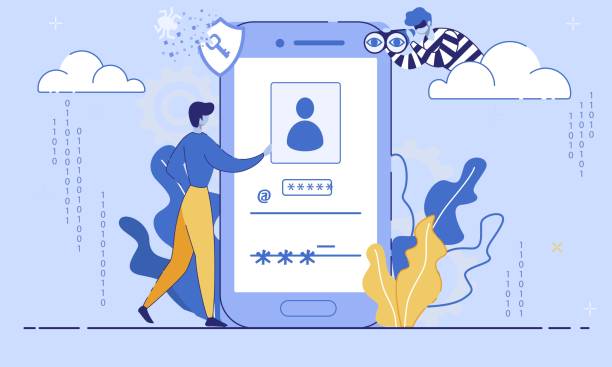Why Do You Need a Personal Website? Discovering Online Potential
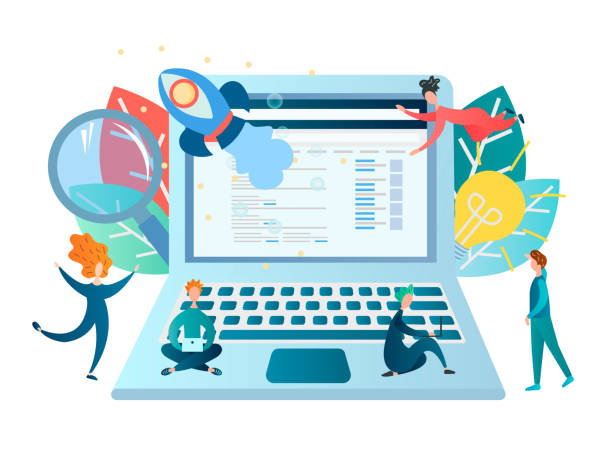
In the current digital age, having a powerful online presence is more important than ever.
#PersonalWebsiteDesign is no longer just an option, but a necessity for anyone who wants to advance in their field or even simply share their ideas and experiences with the world.
A personal website is like a digital business card, but with far greater capabilities.
This platform allows you to showcase your #OnlineResume, present #Portfolios, or even serve as a #Blog for sharing your knowledge and experiences.
Your personal website can serve as a central hub for all your online activities, where visitors can easily find and connect with you.
This website not only gives you credibility but also provides complete control over your personal brand.
You can fully manage how information is displayed, the tone of the content, and even the user experience.
This approach allows you to present an accurate and professional image of yourself to potential audiences and employers.
Many individuals and businesses today refer to personal websites to research candidates or professionals.
Your personal brand is best developed and strengthened through this site.
Does your current website convert visitors into customers or drive them away? Solve this problem forever with professional corporate website design by Rasawweb!
✅ Build powerful credibility and branding
✅ Attract target customers and increase sales
⚡ Get a free consultation now!
Planning and Goal Setting: The Key to Success in Personal Website Design
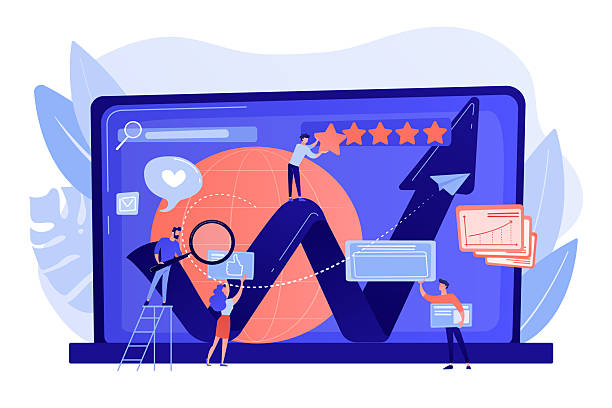
Before starting practical work on personal website design, there is a crucial step that is often overlooked: detailed planning and setting clear goals.
Without a clear roadmap, your website might seem aimless and fail to reach its full potential.
The first step is to answer this question: “What is the main purpose of having this website?” Do you want to find a job, sell your products, share your knowledge, or simply have an online presence? Your goals should be SMART: Specific, Measurable, Achievable, Relevant, and Time-bound.
For example, the goal could be: “In the next three months, I will launch a personal website to showcase my graphic design portfolio to attract two new projects.”
After setting goals, identify your target audience.
Who is your website designed for? Students, employers, clients, or colleagues? Understanding your audience helps you choose content, tone, and even visual design for your site that will be attractive and useful to them.
This step provides crucial guidance for selecting site features, content type, and even future content marketing strategies.
A comprehensive plan includes setting a budget, timeline, and selecting appropriate tools and platforms, which we will cover in later chapters.
These initial steps not only save you time and money but also pave the way for your success in personal website design.
Choosing the Right Platform for Personal Website Design: Exploring Options

After initial planning, it’s time to choose the right tools and platform for your personal website design.
This decision heavily depends on your needs, budget, and technical knowledge.
Several options are available, from Content Management Systems (CMS) to Website Builders and even manual coding.
One of the most popular options is WordPress.
WordPress is a powerful and flexible CMS suitable for both beginners and professional developers.
With thousands of themes and plugins, you can create almost any type of website, from simple blogs to complex online stores.
Little technical knowledge is required to start with WordPress, and a large community of users and developers supports it.
Other options include website builders like Wix, Squarespace, and Zyro.
These platforms are ideal for individuals without technical knowledge who want to create a website with drag-and-drop functionality.
They typically provide pre-designed templates and visual tools, allowing website creation in a short time, but may have limitations in terms of flexibility and full control.
For developers or individuals who require full control and maximum customization, manual coding with HTML, CSS, and JavaScript, or using frameworks like React or Vue.js, can be the best option.
This method offers infinite flexibility but requires high technical knowledge.
Ultimately, choosing the best platform for your personal website creation depends on your priorities.
Is ease of use important to you, or flexibility and full control? The following table provides a comparison between these options:
| Feature | WordPress | Website Builders (e.g., Wix/Squarespace) | Manual Coding |
|---|---|---|---|
| Ease of Use | Medium to High | Very High | Very Low (requires technical knowledge) |
| Flexibility and Customization | Very High | Medium | Infinite |
| Cost | Hosting and Domain (paid plugins) | Monthly/Annual Subscription | Tools, Hosting, and Domain |
| Technical Knowledge Required | Low to Medium | Very Low | High |
| Content Management | Excellent | Good | Depends on implementation |
Content Strategy: The Beating Heart of Your Personal Website
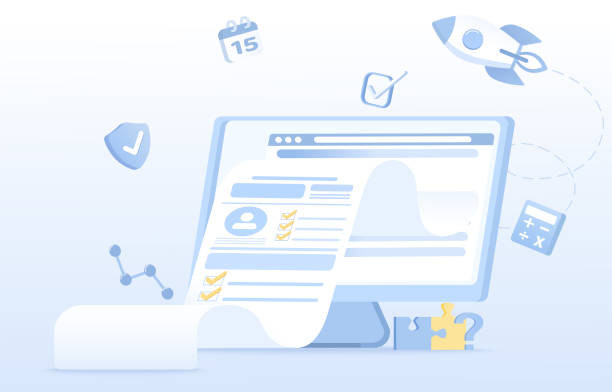
Content is king; this statement holds especially true in the web world, particularly for a personal website.
After platform selection and initial design, the main focus should be on producing valuable and engaging content.
Content strategy involves planning, creating, and managing text, image, and video content that supports your website’s goals.
The first step in this path is to identify the type of content your target audience is interested in.
Are they interested in educational articles, portfolios, case studies, personal experiences, or industry news? Content diversity can help attract and retain visitors.
For example, if you are a graphic designer, you can share your portfolios with project details, educational articles on design principles, or even blog posts about new industry trends.
Your content should be original, high-quality, and useful for your audience.
Use keywords relevant to your field to improve your site’s SEO and appear higher in search results.
Also, using visual elements such as images, videos, and infographics can increase the attractiveness of your content and make it more appealing to the reader.
Create a content calendar.
This calendar helps you produce content regularly and avoid repetition.
Keeping your website updated with new content not only gives users a reason to return but also shows search engines that your site is active and reputable.
Your content should reflect your expertise and identity and help you become recognized as an authority in your field.
Personal website design without strong content is like an empty shop window.
Tired of losing customers due to poor e-commerce site design? With Rasawweb, solve this problem forever!
✅ Increase sales and visitor-to-customer conversion rate
✅ Smooth and engaging user experience for your customers⚡ Get a free consultation
Design Principles and User Experience in Personal Websites: Visual Appeal and Ease of Navigation
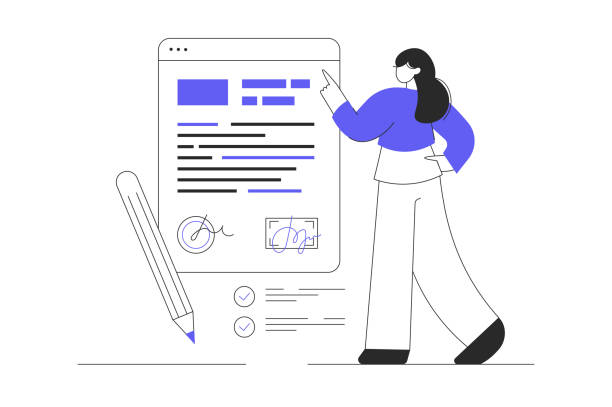
When it comes to personal website design, visual appeal and user experience (UX) are two key factors that ensure your site’s success.
A beautiful but difficult-to-use website quickly drives visitors away, and vice versa.
In visual design, simplicity and cleanliness (Minimalism) are often the best approach.
Avoid clutter and excessive use of colors and fonts.
A limited color palette, readable fonts, and sufficient white space help your content stand out.
Your personal brand should be reflected in the site’s design; if you are a creative artist, the design can be bolder, but if you are a financial consultant, it should convey a sense of trust and seriousness.
But beauty without functionality has no meaning.
User Experience (UX) means how easy and enjoyable your website is for the user.
Site navigation should be highly intuitive; menus should be clear and accessible, and users should be able to easily find what they are looking for.
Page loading speed is also a crucial factor; if your site is slow, users will leave before the page fully loads.
Responsive Design is also essential.
Your website should display well on various devices, from desktop computers to tablets and mobile phones.
The “Contact Us” section should be easily accessible and include various ways to communicate with you.
A personal website with a good user interface and strong UX not only looks professional but also helps users spend more time on your site and get closer to your goals.
Optimizing for Search Engines and Responsiveness: Factors for Your Personal Website’s Success
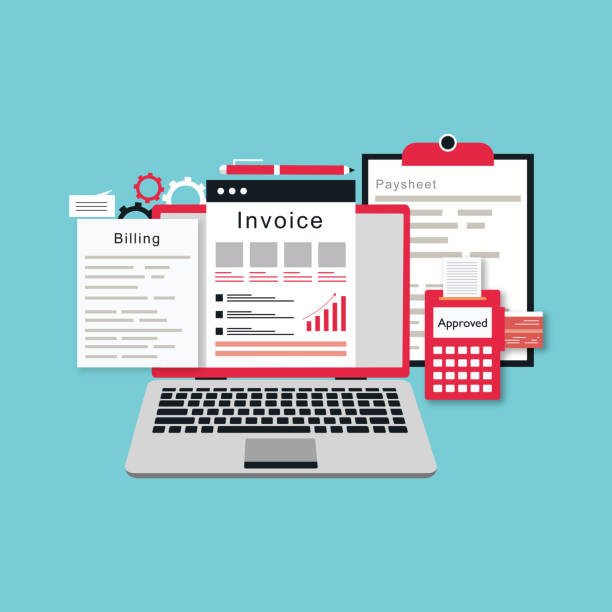
The success of a personal website is not limited to beautiful design and quality content; you must ensure that people can find it.
This is where Search Engine Optimization (SEO) and Responsive Design come into play.
SEO is a set of actions that prepares your website for higher ranking in Google search results and other search engines.
This includes keyword research, optimizing titles and meta descriptions, using appropriate URL structure, high loading speed, and internal and external link building.
If a website does not appear in the initial search results, its chances of being seen significantly decrease.
Alongside SEO, website responsiveness is crucial.
Today, a large portion of web traffic comes from mobile devices.
A responsive website automatically adjusts its layout to the user’s screen size, providing a seamless and optimized user experience on any device, from desktops to smartphones.
Google also prefers mobile-friendly websites in its ranking, so this is an important factor for SEO as well.
To ensure responsiveness, use responsive design frameworks or leverage themes that are responsive by default.
Also, by using tools like Google PageSpeed Insights, you can check and improve your site’s loading speed and performance.
Personal website design that is both SEO-optimized and displays well on all devices not only attracts more visitors but also increases your credibility and professionalism.
Showcasing Portfolios and Skills: How to Transform Your Personal Website into a Powerful Tool
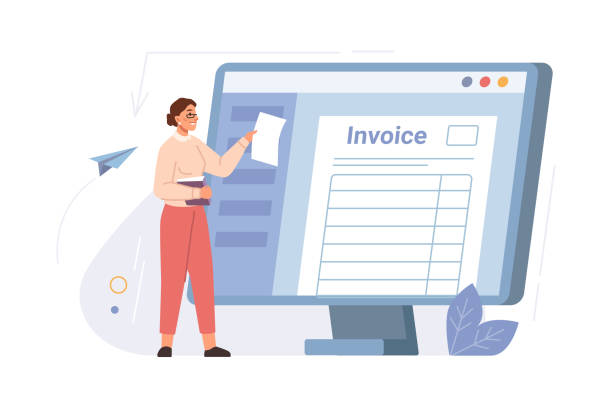
One of the primary reasons for personal website design is to showcase your abilities, skills, and portfolios.
This section serves as the main display, especially for creative professionals, freelancers, and job seekers.
A strong portfolio gallery not only shows what you can do but also reflects the quality of your work and your unique style.
When creating the portfolio section, pay attention to the following points:
* **Quality over Quantity:** Choose your best and most relevant works.
You don’t need to display every project you’ve ever done.
A few excellent portfolio pieces can have a greater impact than dozens of average ones.
* **Project Details:** Provide descriptions for each portfolio item.
What was the objective? What role did you play in the project? What challenges did you overcome and how did you solve them? What were the results of the project? These descriptions help visitors understand the depth of your expertise.
* **Diversity in Skills:** If you have various skills, choose portfolio items that demonstrate this diversity.
For example, if you do both web design and branding, provide examples of both.
* **Testimonials:** Including positive reviews from previous clients or colleagues doubles your credibility.
These are social proofs that can build visitor trust.
For your personal website, creating a dedicated page for your skills can also be very useful.
On this page, list all your technical, software, or personal skills.
You can show your proficiency level with charts or progress bars.
This approach helps potential employers or clients quickly determine if you are the right person for their needs.
| Section | Goal | Suggested Content |
|---|---|---|
| Portfolio | Practical display of abilities | Key projects with descriptions, images, videos, and results |
| Skills | Listing capabilities | List of technical and soft skills, proficiency level, specialized software |
| Testimonials | Increasing credibility | Reviews from previous clients or colleagues with name and position |
| About Me | Personal introduction | Short biography, educational and professional background, interests, and values |
Continuous Maintenance and Updates: Ensuring the Longevity of Your Personal Website

Personal website design is just the beginning; continuous maintenance and updates are as important as the design itself.
A dynamic and updated website is not only more attractive to visitors but also performs better in terms of security and functionality.
The first step in maintenance is regularly checking for broken links and ensuring all forms and buttons function correctly.
Broken links disrupt the user experience and can harm your site’s SEO ranking.
Updating CMS platforms like WordPress, plugins, and themes is also crucial.
These updates usually include security enhancements, bug fixes, and new feature additions.
Ignoring them can make your site vulnerable to cyberattacks.
Also, regularly update your website’s content.
If you have a blog, publish new articles.
If there have been changes in your industry, review and correct the information on your site.
Adding fresh content shows search engines that your site is active and relevant, and can help improve SEO ranking.
Regular backup of site data is a necessary preventive measure.
In case of any problem, you can quickly restore your website to its previous state.
Monitoring site performance using tools like Google Analytics also helps you understand visitor behavior, identify your site’s strengths and weaknesses, and make data-driven decisions for its improvement.
A personal website that is well-maintained and updated not only demonstrates your professionalism but also ensures you have a powerful and stable online presence.
Are you worried that your company’s old website might drive away new customers? Rasawweb solves this problem with modern and efficient corporate website design.
✅ Increases your brand’s credibility.
✅ Helps attract targeted customers.
⚡ Contact Rasawweb for a free consultation!
Growth Strategies and Earning from Your Personal Website: Beyond an Online Resume
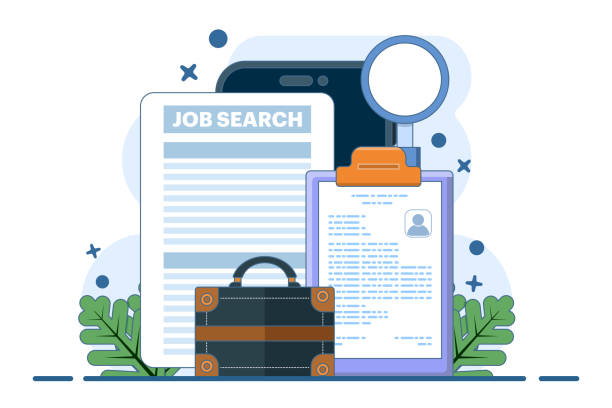
Personal website design can be more than just an online resume or a platform for showcasing portfolios.
With a smart strategy, your website can become a source of income and help your professional and financial growth.
One of the most common ways to earn income is content marketing and selling information products.
If you are an expert in a field, you can sell your knowledge in the form of eBooks, online courses, webinars, or private consultations.
These products are not only a source of income but also help establish your position as an authority in your specialized field.
Another method is Affiliate Marketing.
By introducing others’ products or services on your site and placing affiliate links, you can receive a percentage of sales made through your site.
This method does not require you to produce specific products or services, but choosing relevant and high-quality products is crucial to maintain audience trust.
Advertising, such as using Google AdSense, can also be a source of income, but it is generally not recommended for personal websites unless you have very high traffic, as it may disrupt the user experience.
Also, offering consulting services, coaching, or freelancing through your website is a direct way to earn income.
Your website acts as a tool for attracting clients and showcasing your expertise.
Finally, your personal website can serve as a platform for networking and attracting job opportunities.
By publishing analytical articles, participating in discussions, and constantly showcasing your abilities, you can attract the attention of potential employers and colleagues and create new opportunities for yourself.
The Future of Personal Websites: Developments and New Trends
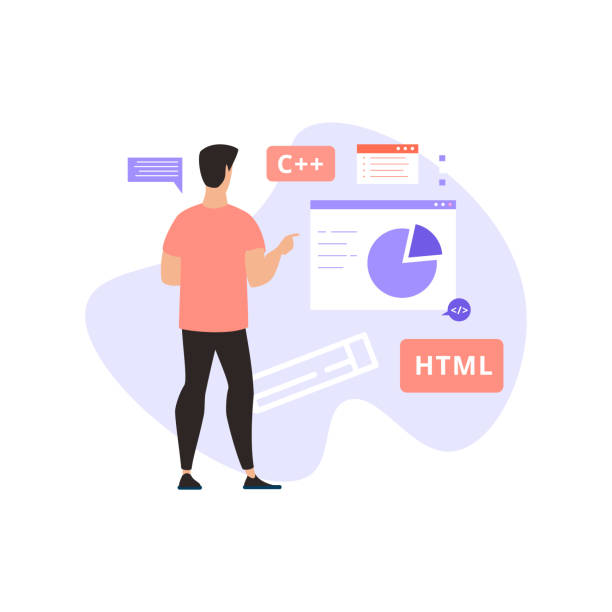
Personal website design is evolving, and with the emergence of new technologies and changing user expectations, its future will undergo exciting transformations.
Understanding these trends helps you prepare your website for the future and always stay ahead.
One of the most important trends is the increasing importance of Artificial Intelligence (AI) and Machine Learning in web development.
AI-powered tools can help personalize user experience, optimize content, and even automate parts of the design and maintenance process.
For example, AI chatbots can provide initial support or adapt website content based on user interests.
Single-Page Applications (SPAs) and Progressive Web Apps (PWAs) are also gaining popularity.
SPAs offer a faster user experience because all content is loaded on a single page.
PWAs also combine the best features of websites and mobile applications, providing functionalities like offline work and push notifications.
Virtual Reality (VR) and Augmented Reality (AR) also have great potential to change how we interact with the web.
Although still in early stages for personal websites, imagine how appealing a personal website that allows you to view an interior designer’s portfolio in 3D space would be.
Cybersecurity will always be a major concern.
With increasing threats, using SSL certificates, two-factor authentication, and advanced security solutions becomes more essential for your personal website.
Ignoring these can lead to data loss or user trust.
Finally, the focus on video content and podcasts is also growing, as users tend to consume more audio and visual content.
Adapting to these trends ensures that your personal website remains relevant and effective not only today but also in the future.
Frequently Asked Questions
| Question | Answer |
|---|---|
| 1. Why should we have a personal website? | To showcase skills, resume, portfolios, and create a professional personal brand. |
| 2. What is the first step in designing a personal website? | Determining the main goal of the website (e.g., displaying portfolio, online resume, personal blog) and the target audience. |
| 3. How important is choosing a suitable domain name? | Very important; the domain name should be relevant to your identity, memorable, and easy to type (e.g., your first and last name). |
| 4. What kind of content should be placed on a personal website? | Typically includes “About Me,” “Resume,” “Portfolio,” “Contact Methods,” and optionally a “Blog.” |
| 5. What does Responsive Design mean and why is it important? | It means the website displays correctly and optimally on all devices (mobile, tablet, laptop) and is crucial for user experience and SEO. |
| 6. Which platforms are recommended for building a personal website? | WordPress for more flexibility and control, or using Website Builders like Wix or Squarespace for simplicity. |
| 7. How can I improve the SEO of my personal website? | Using relevant keywords, meta descriptions, quality and updated content, image optimization, and fast loading speed. |
| 8. What are the main challenges in maintaining a personal website? | Regularly updating content and plugins, regularly backing up data, and monitoring website security. |
| 9. Is programming knowledge required to design a personal website? | No, using Content Management Systems (CMS) like WordPress or website builder tools, a personal website can be created without coding. |
| 10. How can I promote and introduce my personal website? | Sharing the link on social media, adding the link to email signatures, business cards, and resumes, and professional networking. |
And other services of RasaWeb advertising agency in the field of advertising
Smart Sales Automation: A combination of creativity and technology to improve SEO ranking through SEO-driven content strategy.
Smart Link Building: Designed for businesses seeking to increase sales through precise audience targeting.
Smart Marketing Automation: A fast and efficient solution for analyzing customer behavior with a focus on Google Ads management.
Smart Social Media: A creative platform for improving customer acquisition with marketing automation.
Smart Advertising Campaign: A creative platform for improving campaign management using real data.
And over hundreds of other services in the field of internet advertising, advertising consultation, and organizational solutions
Internet Advertising | Advertising Strategy | Advertorials
Sources
Personal Website Design Guide on Webramz, How to Create a Personal Website? – Roocket, Personal Website Design Tips – Persian Host, Design Your Own Personal Site – Iran Host
? Are you ready to soar in the digital world? Rasawweb Digital Marketing Agency, your strategic partner on the path to online growth and success. We elevate your business by providing services such as SEO, online advertising, and multilingual website design.
📍 Tehran, Mirdamad Street, next to Bank Markazi, Kazeroon Janoubi Alley, Ramin Alley No. 6

